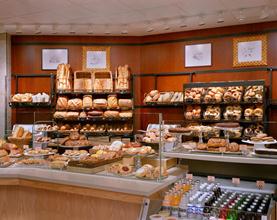In a Struggling Industry, Fast Casual Casts a Shining Light
29 April 2011
 Leading fast-casual restaurant chains not only weathered the economic storm, they prospered, reports NPD.
Leading fast-casual restaurant chains not only weathered the economic storm, they prospered, reports NPD.
Visits to the leading fast-casual restaurant chains grew 17% over the last three years while the rest of the industry experienced its steepest traffic declines in decades, and consumer demand for fast-casual offerings exceeded the unit growth of leading fast-casual chains, according to foodservice market research by Port Washington, N.Y.-based The NPD Group, a leading market-research company.
As defined by NPD, fast-casual restaurants are upscale quick-service restaurant concepts that offer more service and higher-quality food, and have a larger average check size than other fast-food restaurants. According to NPD's CREST®, which continually tracks consumer usage of foodservice outlets, for the year ending December 2010, visits to the leading fast-casual restaurant chains such as Chipotle, Five Guys Burgers and Fries, Noodles & Company and Panera were up 6% versus a year ago. This compares to a 1% decline in total industry visits for the same time period. Over the last three years, fast-casual traffic has grown by 17%.
"Fast-casual restaurants have done an excellent job of satisfying their customers' needs for quality and service and have built strong customer loyalty as a result," says Bonnie Riggs, restaurant-industry analyst at NPD. "The attributes that define the fast-casual concept—fresh, food quality and service—are the reasons why customers give them their highest satisfaction ratings."
Responding to growing consumer demand, the major fast-casual chains grew units by a double-digit rate over the last three years. Even with this unit growth, demand outpaced the rate of unit development, reflecting consumer satisfaction with the fast-casual experience. Since 2007, fast-casual unit availability expanded 12%.
According to NPD's A Look into the Future of Foodservice, which provides a 10-year forecast of foodservice trends based on aging, population growth and trend momentum, demand for fast-casual restaurants will grow significantly over the next decade. Incremental traffic for fast casual will source to teens and young adults—particularly those 10 to 30 years of age (Generation Z)—and to a lesser extent, those 55+ years. By 2019, Generation Z will be the single largest population group at 90 million strong.
"Fast-casual concepts are in an excellent position for growth,” says Riggs. “We've seen other fast-food customers trading up to fast casual and full-service customers trading down to fast casual. In addition, with imitation being the highest form of flattery, we're now seeing other segments of the industry duplicate what has made fast-casual concepts so successful."
Photo: Higher food quality and more service define the fast-casual customer experience at this Panera Bread unit in St. Louis.
